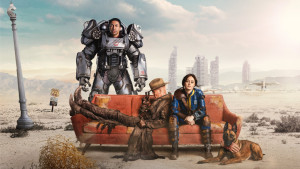Please support Game Informer. Print magazine subscriptions are less than $2 per issue
Interview: Richard Ham Explains What Makes Brink So Special
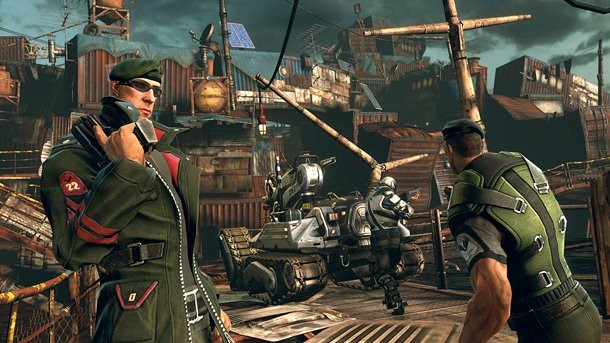
Splash Damage is certainly no stranger to creating memorable multiplayer warfare. The company has made a name for itself by creating unique, objective-based multiplayer modes for popular franchises like Quake and Wolfenstein. This fall Splash Damage will be launching its first original IP, Brink, a game that aims to blur the line between single player and multiplayer like never before. We talked with Richard Ham, the creative director of Brink, to see what separates his upcoming FPS from the rest of the pack.
Like Splash Damage’s Enemy Territory franchise, Brink breaks down the action into a series of objective-based competitive maps. How does the story unfold within this style of gameplay? Are the maps interwoven and meant to be played sequentially? Or are they self-contained and playable out of order?
Well, they’re both actually. It’s been a tricky feat of writing, but basically, each mission in Brink is completely standalone if that’s how you want to experience it. You can jump around from mission to mission in any order you want, and always have a clear understanding about what’s going on and what you need to accomplish.
For instance, you might be choosing to play through the story solo, in sequence, when one evening you see a friend of yours playing in a mission you haven’t reached yet and he’s playing for the opposing side. We decided that we didn’t want ‘the story’ to stand in the way of friends playing together, so you can leave your storyline behind and jump into the mission with your friend. And after that’s over, maybe he’ll jump into your storyline and play with you.
This is all possible because Brink is very unique in how it approaches single player and multiplayer gaming. For us, there’s no difference between the two. If you’re playing single player, you’re playing through the story effectively by yourself. If you’re playing co-op, you play that same story with a friend. If you’re playing online, the storyline is identical, but the enemies are controlled by real players. And those human players who are your enemies in a mission? They’re actually playing through their own separate storyline, and to them, you’re the enemy they have to defeat to complete their campaign.
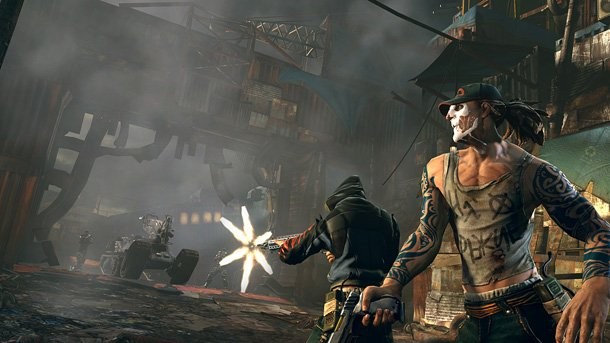
What can players expect to unlock as they level up? Will they have access to new weapons or different types of objectives? Or are the unlockables restricted to customizing the look of your character?
We’re putting a lot of unlockable content in Brink. As you mentioned, there are quite a few outfits, hairstyles, clothing colors, etc., you can get which are all about changing your look and showing off how ‘leet you are.
But even more important than that are the abilities. Every time the player levels up, they can buy one new ability, in one of five different categories: soldier, medic, operative, engineer, or all-purpose. Each of these can only be used when you’re playing as a particular class, but remember, you’ll be able to change classes at any time while you’re in a mission. This creates a lot of really rich and dynamic situations where you can radically change the course of a mission, and the type of gameplay you’re involved in, by changing your class and focusing on an entirely different set of objectives. And because you change, your teammates and the enemy will change as well to adapt.
And of course, there are guns. We wouldn’t be a FPS without a wide range of weapons, in several different categories. In addition to new weapons you can unlock, there are also a wide variety of weapon attachments you can get, which change how your weapons behave and how you use them.
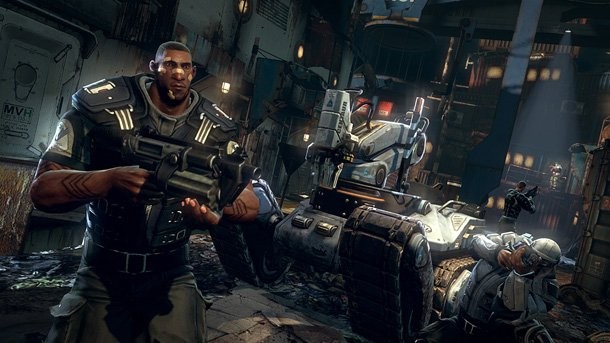
Speaking of customizing your character: Are the changes you make to your character purely aesthetic? Will the guy who chooses to run around bare-chested be easier to kill than the one decked out in armor? Will a character wearing armor move slower?
We decided early on that we wanted players to make decisions about their appearance based on what they feel looks cool, instead of what they feel they “need” to wear to be competitive. If we had attribute-affecting stats on clothes, then players would dress based on those stats, and you’d get a world where everyone looks the same, because players will decide what the “best” combination of clothes is. So your look is all about just that: your look.
However, there is one part of character customization that does affect gameplay, very heavily in fact. There are three body types in Brink: normal, heavy, and light. This choice changes a lot of stuff: the bigger you are, the more hitpoints you have, but the slower you move. The smaller you are, the easier you are to kill, but you can climb to higher and higher obstacles and move like the wind. The weapons you can use aren’t based on your current class, but instead on how physically strong you are. As well, the stronger you are, the more equipment you can carry.
It’s a very important decision to make, whether you’re going to be a fast ninja-like Operative, a well rounded Soldier, a lumbering hulk of a Medic who’s late to the party but brings all the cool toys, or an Engineer who’s always five steps ahead of everyone else but on the razor’s edge of death every step of the way.
Players can choose to play as either the Resistance or the Security. Besides the differing objectives for each map, are there any other differences between the two factions? Do they have different weapons or gear available to them? If you unlock something as one faction, will it be useable as the other faction too?
We decided early on to give both factions access to the same gear and abilities. Because Brink can be played in any way -- solo, co-op, or competitive -- we didn’t want to give one team any sort of unfair advantage over the other.
Plus, if you’ve worked hard and earned an ability or weapon that you really like, we’d kind of be jerks if we said you could only use it half the time. There are actually two complete storyline campaigns you will experience as you play through Brink -- one for Security and one for Resistance -- but you can keep your leveled-up character when you switch sides.
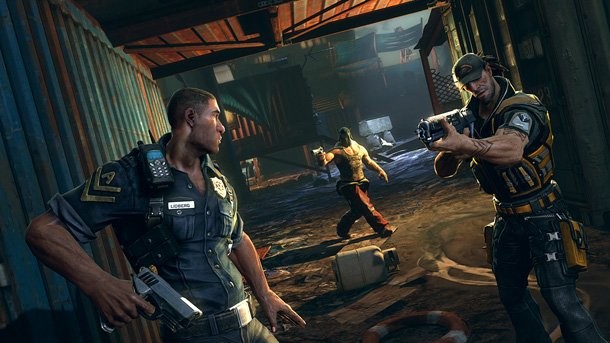
In addition to the main objective on each map, the player always has a number of optional objectives depending on the situation. Do you always have to select one of these objectives in order to get the experience points for it? For example, if I see an enemy on the ground, can I interrogate him on the fly, or do I have to first select that as my objective, and then perform the action?
You’ll get your XP for doing what needs to be done, at any time. However, there is bonus XP you can only get if you complete a task that you’ve selected from the Objective Wheel. The reason we want to encourage players to use the wheel is all about communication within the team.
For instance, let's say you're about to hack an enemy turret on the fly which will bring it under your team's control. If you first set it as your objective, the rest of your team will actually hear you say “Attempting to hack enemy turret!” This can be really valuable information for them to have. Someone else on your team may be about to attack that same turret head-on (obviously at considerable risk to them), but if they hear first that you’re going to hack it, they may wait a few seconds to see if you pull it off. If you didn’t announce your intentions via the wheel, they wouldn’t know what you were doing, and might go ahead and just charge in. One thing that’s important, however, is that we don’t want team communication to slow down the game or become a hassle. So when you’re in a hurry, instead of bringing up the Objective Wheel and having to navigate through it, you can just tap the objective menu button instead of holding it. In doing this, you’re telling the game “I want to do this task”, and the game will automatically take care of all the communication. And you’ll get your XP bonus!
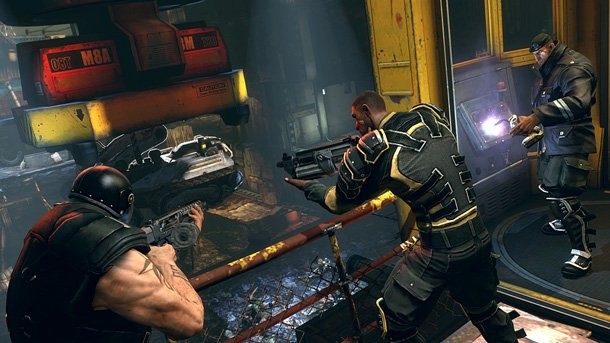
Brink features a SMART (Smooth Movement Across Random Terrain) button that helps the player maneuver around the environments, but players can also choose to duck and jump manually if they want. Are there any moves the SMART system is capable of that can’t be reproduced by the player who wants complete control of their character? Will one player have the advantage (i.e. the one using the SMART system, or the one jumping and ducking for themselves)?
The player who does all his own jumping and ducking and climbing and sliding will actually have a slight advantage over the player who uses the SMART button for all those actions. Basically, if he practices and gets good at the timing, he’ll find he can make his climbs a bit faster, his slides a bit more smooth. But not so much so that he’d have an unfair advantage over the player using SMART.
In the demo we saw, players could select between generalized weapon loadouts such as Heavy, Close Combat, and Assault. Can they also customize what guns each loadout contains, or is it determined by the game?
We’ve completely reworked the weapon load-out system we first showed at E3. Now when you use a command post in game, you have access to every weapon in the game that you’ve unlocked. We made the change because we wanted players to have as much freedom and flexibility as possible during a mission.
About how many weapons does Brink contain? Do they offer any customization as well?
We’re planning for Brink to ship with 24 different weapons, spread across four different categories. We’re making sure that each of these has a really unique feel and use in combat, so it’s not just going to be a bunch of gun clones with slight stat differences.
We’ll have five sidearms, six light weapons, six assault-sized weapons and five heavy weapons in Brink. The different classes directly relate to the three different body types a player can choose from. So, a “light” player can have a light weapon as his primary, and a side arm as his secondary. A “normal” player can have an assault weapon as his primary and up to a light weapon as his secondary. And a “heavy” player can have a heavy weapon as his primary and up to an assault weapon as his secondary (so he can really bring the pain!).
In addition to the weapons, there’s a wide variety of attachments we’re going to ship with as well. We don’t have a final number for these at this point, but it’s going to be a combination of classic stuff players have come to expect (red dot sights, extended magazines) and a few surprises.
The wide range of guns, plus attachments, plus body sizes, makes for some really interesting combinations -- both on a given player, and spread across a whole team.
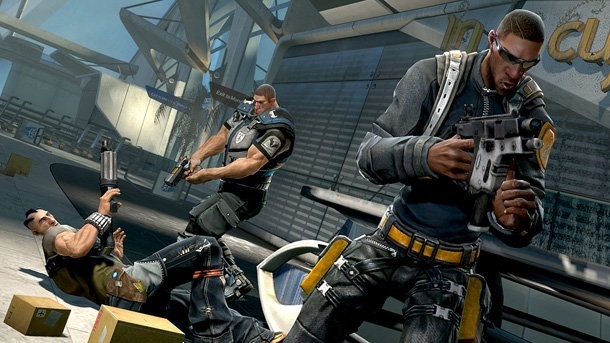
Do classes have any other abilities besides the basics (i.e. Medics can heal players, Engineers can repair objects)?
Oh yeah, there’s a ton of abilities. I can’t go into all the specifics as we’re still finalizing the list, but what’s cool about our class abilities is the variety they represent. There are enough of them such that you can really specialize, even within a given class.
So, are you going to be the type of Soldier who focuses on more ammo upgrades, or a wide variety of special grenades, or on protecting your teammates? Are you going to be the kind of Medic who’s better at reviving people, or preventing them from dying in the first place? Are you going to use some of those cool Operative spy abilities, or are you going to forgo all of them so you have more points to spend on Engineer, Medic and Soldier? Or are you going to downplay all class specific abilities, and instead go for the all-purpose ones that can be used at all times, no matter what class you are?
There are a lot of choices to make, and we suspect that players will actually want to create multiple characters to experiment with different combinations, so they’ve got the right fighter for every occasion -- almost like an MMORPG.
Are you able to give orders to AI partners, or do they automatically choose their roles? How do you balance difficulty for a person relying on AI partners versus a team with more human partners?
We don’t feature players giving orders to each other, because we find that in real online games, players don’t tend to listen to each other! However, players generally will listen to a central voice of authority, if that voice comes from the game. So everyone on the team -- you and your squad mates, human players and AI controlled character alike -- all take orders from the central AI Commander, who’s always evaluating the situation on the battlefield and letting everyone know what they should be doing to help win the mission.
This Commander will reward everyone with XP for doing the right thing at the right time (the XP bonus I was talking about earlier). But, if there are players on your squad who just aren’t interested in doing what needs to be done, then the Commander will try to get others to do it by offering even more XP. So the game actually encourages players to become good teammates, and we find it’s a very effective system. And of course, in the case of AI-controlled squad mates, you can always count on them to do what they say they’re going to do -- or die trying!










